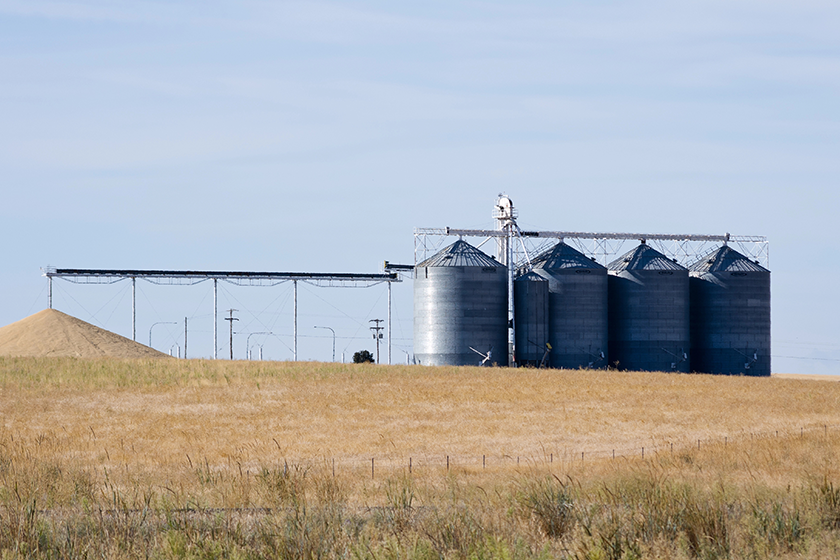

How Does A Grain Vacuum Work?
Grain vacuums play an important role in modern grain handling, streamlining the process of transferring and cleaning grain from one location to another. But how does a grain vacuum work, and what makes it such an efficient tool for farmers and agricultural facilities?
Grain vacuums use a powerful suction system to move large amounts of grain with minimal labor, helping save time and reduce potential losses during transport. This article will break down the components of a grain vacuum, how they function, and why these machines have become essential in agriculture.
What Is a Grain Vacuum?
A grain vacuum is a specialized piece of agricultural equipment designed to transfer grain quickly and efficiently. Using a high-powered suction system, it pulls grain from one area such as a silo, bin, or pile and moves it to another, whether it’s a truck, storage area, or processing facility. Grain vacuums can handle different types of grains, such as wheat, corn, barley, and oats, making them versatile tools for a wide range of farms and facilities.
These vacuums help with the safe handling of grain, reduce the risk of grain spoilage, and minimize the dust and labor involved in manual handling. They’re also ideal for cleaning up grain spills and preparing silos or storage bins for fresh loads.
Key Components of a Grain Vacuum
Understanding the main components of a grain vacuum will clarify how these machines work and what makes them so effective.
- Suction Hose: The suction hose is where the grain is initially drawn in. It varies in size and flexibility, allowing operators to reach areas that may be difficult to access manually.
- Vacuum Pump: The vacuum pump is the powerhouse of the system, creating the suction that draws the grain through the hose and into the collection area.
- Filtration System: The filtration system is essential for removing dust and small debris, keeping the grain clean as it’s transferred.
- Collection Bin or Outlet: Once the grain is vacuumed, it’s directed to a designated collection area, such as a truck or bin, for further storage or transport.
How Does a Grain Vacuum Work?
A grain vacuum functions by using a high-powered pump to create a vacuum effect, which pulls grain through the suction hose. When the machine is turned on, the pump removes air from the suction hose, generating a strong vacuum that pulls in the grain. The filtration system captures dust and debris, ensuring that only the grain makes it through to the collection area.
The suction strength and flow rate can be adjusted depending on the type of grain and the distance it needs to be transported. The grain vacuum’s design allows it to handle large amounts of grain quickly, reducing labor and increasing operational efficiency.
Applications of Grain Vacuums
Grain vacuums are essential tools on many farms and in grain-handling facilities, with applications that include:
- Grain Transfer: Moving grain between silos, bins, or transport vehicles.
- Grain Cleanup: Collecting spilled grain and removing waste from storage areas.
- Dust Control: Minimizing airborne dust during grain transfer for a cleaner and safer work environment.
Maintenance Tips for Grain Vacuums
A grain vacuum has to be kept in good condition for optimal performance. Regular maintenance includes checking the hoses for clogs or damage, cleaning the filtration system, and ensuring that the vacuum pump is functioning properly.
- Inspect Hoses: Regularly check hoses for cracks, clogs, or wear and tear. Replacing hoses promptly can prevent system inefficiencies.
- Clean Filters: The filtration system should be cleaned frequently to maintain suction power and prevent dust buildup.
- Replace Worn Parts: Components like the vacuum pump, motor, and belts may need replacing over time.
Get Quality Vacuums and Parts from Greystone USA
Greystone USA offers a variety of spare parts for vacuums so you can keep your equipment in peak condition. We also offer a variety of other tools and equipment as well as parts to meet your grain handling needs. From pasture vacuums to spare parts for drags and groomers, we provide reliable solutions to help you maintain a smooth and efficient operation.
Streamline Your Grain Handling Process
A grain vacuum is a valuable investment for efficient, labor-saving grain handling. By understanding how a grain vacuum works and keeping it well-maintained, you can ensure that your grain transfers are fast, clean, and safe.
Visit Greystone USA to find reliable equipment and parts to support your agricultural operations. With the right maintenance tools and replacement parts, you’ll have everything needed to keep your grain vacuum in optimal condition and your workflow uninterrupted.